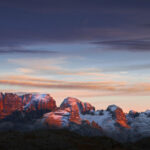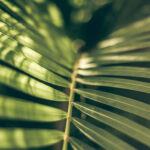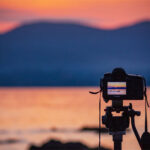Many of us want to take pictures of lions, tigers, bears, and other small furry creatures without the expense of a trip to Alaska or the dangers of a photo safari in Africa. In order to do this, many of us turn to our local zoos which allow us to take as many photos as we want from the safety of the sidewalk. However there are many things to hinder us from getting awesome shots like you would see on safari. From weird feeding times to those pesky fences, a lot stands in the way of us capturing that award winning shot. However, with the right preparation and equipment much of this can be overcome.

Photo by Jon Pinder; ISO 400, f/6.3, 1/200-second exposure.
Equipment
First of all I recommend that you get a DSLR camera. No, it doesn’t have to be a top of the line camera but it needs to have at least 8 megapixels. You’re going to want to get a wide angle lens, probably in the range of 15–35mm and a telephoto lens (probably around 35–300mm). If you’re strapped for cash I have always been able to find an awesome deal on used cameras/lenses on eBay. As far as lenses go you want one that has an image stabilizer built in, this way if you aren’t able to use a tripod you’re more likely to take sharp photos.
Also, I recommend a lightweight tripod. Keep in mind that you’re going to be walking around quite a bit so you want something that’s not heavy. Sunpak makes an awesome carbon fiber tripod that is well suited for this, but you can also find a cheap one in any of the big box stores. Many times, if I feel a monopod is better suited to my needs.
Don’t forget walking shoes. You’re definitely going to want a comfortable pair of shoes because you’re going to be moving around quite a bit.
Planning
Zoo photography is as much about planning as any other shoot. During your preparation you’re going to want to find out when feeding time is. This means you may have to call ahead or ask one of the staff members. If they feed the animals two hours before opening you may have to look into getting into the park before it opens.

Photo by Jon Pinder; ISO 1000, f/5.0, 1/1250-second exposure.
I’m not suggesting that you do anything illegal, but if you’re serious about this you may want to see if you can join the park’s charitable foundation. This may give you privileges that the rest of the public doesn’t have (like getting into the park before anyone else). If that’s a bit pricey for you then you may want to consider some way of getting the animal’s attention.
Don’t haze the wildlife. How would you like it if you were in a cage and someone was messing with you? Not to mention, this won’t endear you to the park staff and may even get you thrown out.
Taking Pictures
Fences can be a pain, but they’re there for both ours and the animal’s protection. When trying to photograph an animal though a fence, open the aperture up as much as possible. This should remove the fence from view while not distorting the rest of the photo.
Focus on the eyes. The eyes are the most expressive part of your subject. From sadness to anger and curiosity, the eyes say it all. Focus on the eyes even if other parts are slightly out of focus. Composition is also a big plus. This will be a great opportunity to apply the rule of thirds when feasible.
Don’t forget to take photos of the wildlife that roams freely through the park. This includes the birds in the aviaries as well as peacocks. I know at my zoo they have also used some sort of orchid-looking plants in their aviary, so although you may be there for the animals this may be an opportunity for some great macro photography, too.

Photo by Cloudtail the Snow Leopard; ISO 250, f/4.0, 1/250-second exposure.
The point of this article is this: keep you eyes open and do your research. Just because the zoo seems like an easy place to shoot photos (and it is) there are still some preparations that you need to take. Have the right equipment and ask questions of the zoo staff. Also, if you find your local zoo isn’t photographer-friendly search for other local venues. You may find that an alligator farm, state park, tiger sanctuary, etc. may be better suited to your needs.
About the Author
Mark Wilson (take-pictues-101.blogspot.com) is a photographer based in the Jacksonville, Florida area.
Like This Article?
Don't Miss The Next One!
Join over 100,000 photographers of all experience levels who receive our free photography tips and articles to stay current:






Funny. I just went to the zoo yesterday. When I first got started the picture taking was a bit slow but then I got into it. I had a ton of fun and got some great images. I wish I read this befor I went.
‘If that is a bit pricey for you then you may want to consider jingling your keys and (if safe) tapping on the fencing around their cage. This may make the animal think they are going to get fed and it’s possible that they might respond to it, if think a zoo keeper is entering the exhibit.’
I’ll add to this. If you want to do one better, wear similar colored clothing to what the keepers wear. In the case of our zoo (San Diego Zoo), they wear khaki.
It generally will get the animals attention, in a way that won’t get you kicked out.